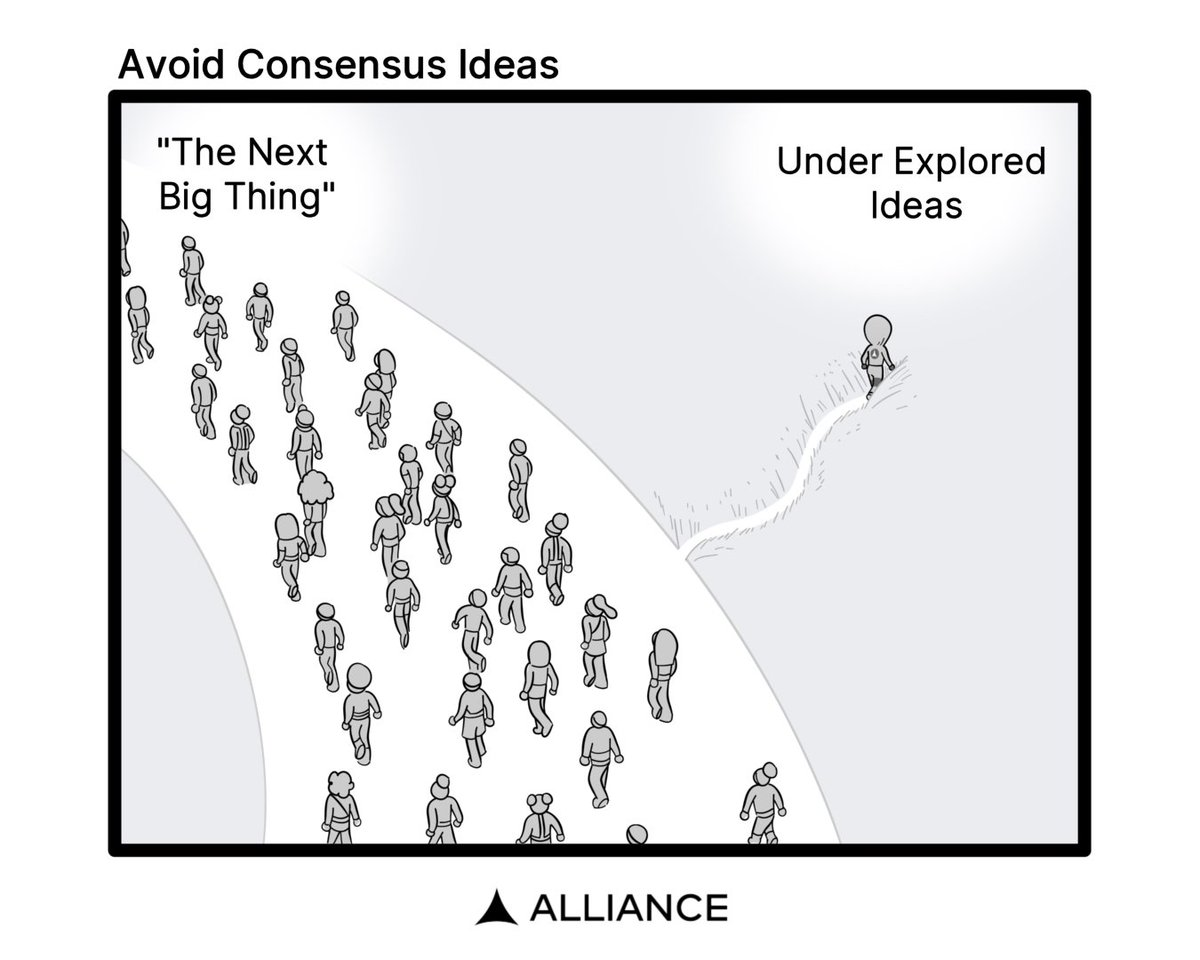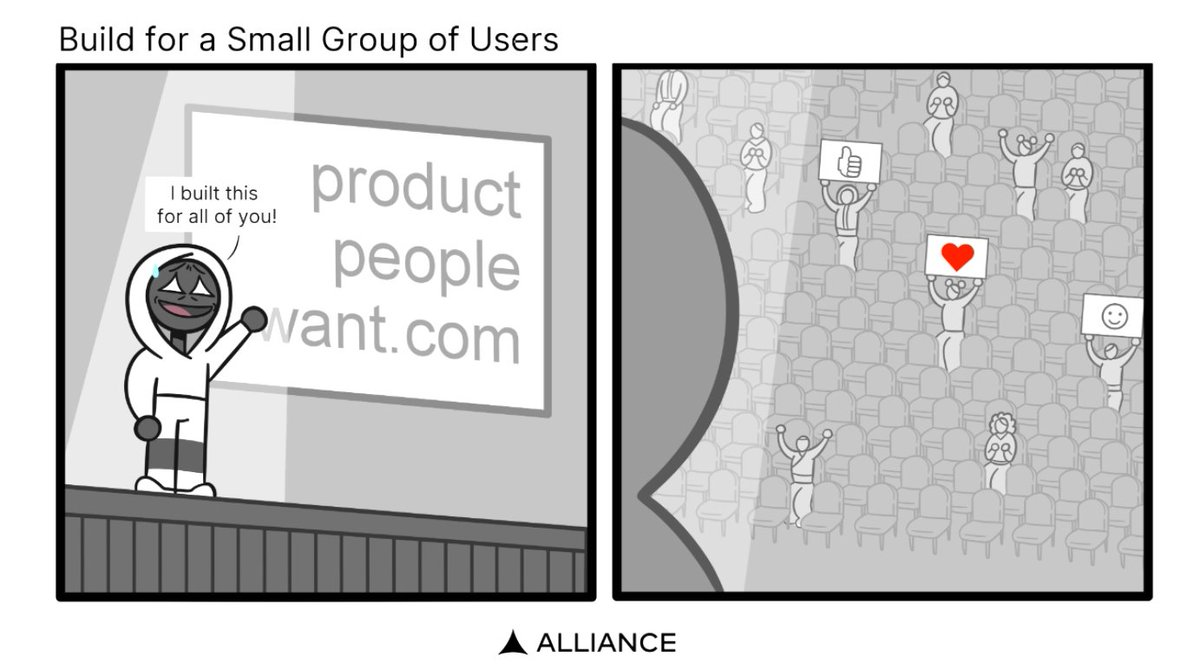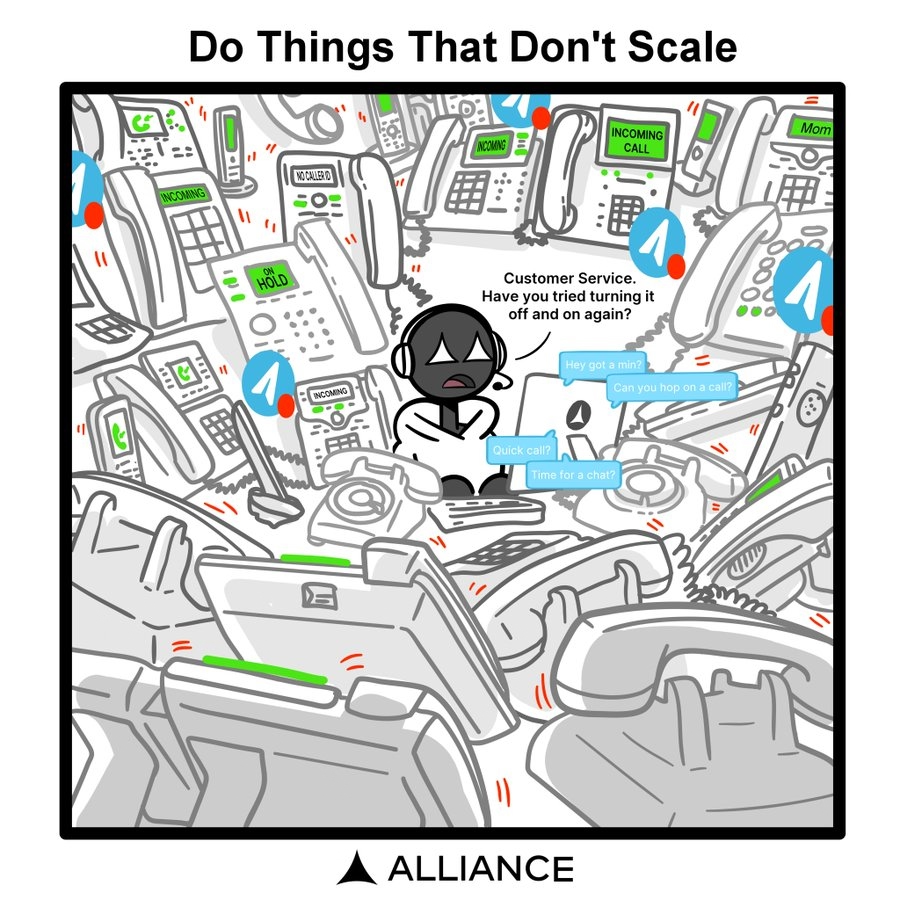Author: Lmrank Han, Core Contributor of Alliance Dao
Translation: J1N, Techub News

I recently gave a keynote speech at Solana Breakpoint, aiming to provide as much valuable information as possible to cryptocurrency project founders within a limited time. The response to my speech was very positive, so I wanted to take some time to elaborate on it in detail, allowing people to quickly benefit from it.
Start by Solving Small Problems
Begin by solving small problems or designing a small niche. Instead of targeting a massive market from the outset, founders should focus on addressing a small, specific issue. This approach often contradicts the advice from VCs, who tend to push entrepreneurs to aim for large markets. However, I suggest focusing on small problems that affect a few users—those who are among the rare daily users of your cryptocurrency product. With thousands of new products launched every day, you should use as many of these products as possible to understand the pain points faced by everyday users. This way, you can identify the real, practical problems that need solving.
Avoid Following the Crowd
When an idea becomes widely accepted, the market is often saturated. Take Polymarket as an example: now that they have validated the feasibility of prediction markets, there are hundreds of teams developing in this space. The best time to innovate is when Polymarket is leading the pack, not after the field has been validated. Competing with established products requires your product to be ten times better to stand out. Therefore, focus your energy on areas that have not been fully explored, where competition is lighter, allowing you more freedom to experiment and sufficient time to create a unique product.

Focus on Serving Early Core Users
Find a group of core early users—about 25 to 50 passionate users who genuinely care about the problem you are solving is sufficient. By focusing on meeting the specific needs of these users, you can build a solid foundation and cultivate genuine supporters. These early users will provide you with valuable feedback, helping you iterate and improve your product quickly. Over time, this process will help you gradually and naturally expand your user base. If people like the product you create, they are likely to recommend it to friends and family organically.

Validate Theoretical Feasibility Before Large-Scale Investment
Before investing significant resources (such as money and time), validate your core assumptions with a Minimum Viable Product (MVP). An MVP is a simplified version of your product that should focus on addressing the main pain points you have identified. You should release a rudimentary product that is sufficient to gain useful insights, allowing you to decide whether to continue investing or pivot to other ideas. An MVP also enables you to gather feedback from users more quickly, and sometimes you may learn completely unexpected things. Additionally, launching a product quickly can give you a competitive edge, as others may also be considering the same idea, and typically, the first product to launch captures initial attention.
Validate Your Idea Within a Month
Time to market is crucial. You should aim to develop and release your MVP within 30 days to capture the momentum of your idea and start collecting user behavior data as soon as possible. Rapid deployment forces you to focus on the most essential features, avoiding the waste of time and resources that can come from over-planning.
Engage Directly, Avoid Relying on Automation
In the early stages, one-on-one communication with users is more important than building a polished product. You should interact directly with users, handle customer support personally, and manually execute tasks that will be automated in the future. These efforts will help you build strong relationships with your initial users and gain deep insights into their needs and behaviors. This approach not only allows you to build and launch products quickly but, more importantly, it ensures your product reaches users sooner.

Avoid Starting Everything from Scratch
For entrepreneurs in the cryptocurrency space, it is often better not to develop core infrastructure yourself but to collaborate with existing products or use existing tools to simulate the product you ultimately want to offer. For example, instead of developing your own AMM, you could use existing AMM products (like Uniswap or Raydium) to implement certain features. This saves resources and allows you to focus more on refining your true core product or service.
Do Not Scale Up Promotion Unless You Have 50 Core Users
One-on-one communication with users is invaluable when building your initial user base. You can reach out to potential users individually via email, social media platforms (like Twitter DMs), or community forums. This method allows you to interact directly with users willing to try your product and gain precise and sincere feedback from them.
Actively Seek User Feedback to Iterate on Your Product
Maintain ongoing dialogue with users. Regular feedback exchanges with users can reveal insights you may not have considered. Use this feedback to gradually improve your product, ensuring it continues to meet the evolving needs of users. Creating such a feedback loop is crucial, as it keeps you closely aligned with user needs and helps you build a product that users truly love. For instance, Alon from Pump.fun reached out to 3,000 users via Twitter DMs to gain market attention for Pump.
Correctly Interpret User Feedback
While user feedback is important, you need to interpret it cautiously. Users may not always accurately express their needs, or the solutions they propose may not align with your product vision. Therefore, you need to use your judgment to identify the real issues behind the feedback and address them in a way that aligns with your product direction.
Ensure Daily Addition of 50 to 100 Active Users
The goal is to gradually increase Daily Active Users (DAUs), with reaching 50-100 DAUs as an initial milestone. This stable user engagement indicates that your product is gaining traction and becoming part of users' daily activities. You need to closely monitor metrics like user retention and engagement to ensure you are building sustainable growth.
Publicly Disclose Your Business Model
Once you have a stable user base, you should start focusing on monetization. You need to develop a clear business model that explains how your startup will generate revenue. Whether through transaction fees, paid features, or token sales, a clear business model is crucial for attracting investors and ensuring long-term survival.
Optimize Marketing Strategies Through User Behavior Data Analysis
Data is your ally. Deeply analyze your data to understand what drives user acquisition, engagement, and retention. Identify key performance indicators (KPIs) that align with your business goals. Use this data to make informed decisions that help you optimize your marketing strategies, product features, and resource allocation.
Persevere and Be Persistent
Persistence pays off. Don’t shy away from the effort; you should reach out multiple times to potential users, partners, or investors. You can use various channels, such as email, DMs, group chats, and social media, to expand your influence. Entrepreneurship often requires continuous networking and promotion. Always maintain an "Always Be Closing" mindset, ready to forge partnerships or deals.
Take Appropriate Breaks When Achieving Milestones
Recognize and celebrate every milestone, no matter how small. Whether it’s launching a new feature or reaching a certain user count, celebrating these achievements can help you and your team maintain high morale. Additionally, taking appropriate breaks helps prevent burnout, allowing you and your team to maintain high productivity over the long term.
Focus on Work
Nothing can replace hard work. Building a successful startup requires full commitment, long hours, and a willingness to put in extra effort. Your dedication and investment will set an example for the team, which can be the key difference between success and failure. You might think: if your competitors spend 7 to 8 hours a day on their projects, how much time are you willing to invest to win the competition? I’m not suggesting you simply work longer hours, but rather let this idea inspire you to work smarter to achieve victory.
Protect Your Control Over the Company
Be mindful of the amount of equity you give away in the early stages. In the early days of a startup, it may be tempting to offer a large amount of equity to secure funding or attract talent, but retaining control over the company is crucial for future development. Consider other incentive measures and negotiate terms that align with your long-term vision. Ultimately, as a founder, you should retain enough equity to benefit from your early hard work in the future.
Limited Funding Can Teach You to Use Resources Better
Securing moderate funding will force you to prioritize important matters and learn to make the most of your resources. In the early stages of a startup, it is generally advised to raise no more than $500,000 to $1 million. Operating on a lean budget encourages founders to find innovative solutions to problems. This discipline can help you build a more sustainable business model while making you more attractive to future investors. A famous example is Jeff Bezos using a door as a desk to remind himself to save time and money.
Spend Money Wisely
Adopt a frugal mindset in all aspects of your startup. Carefully scrutinize every expense, avoid unnecessary overhead, and focus funds on areas that can directly drive growth. A frugal approach can extend your company's runway and provide flexibility to respond to unexpected challenges or market changes.
Be Selective When Choosing Core Team Members
Be cautious when expanding your team. Every new hire should take on a key role that directly impacts the company's success. A lean team is more agile, easier to manage, and less likely to encounter complex management issues like larger startups. Keeping the team lean allows you to pivot quickly and maintain the company culture. If you hire too many people, the company culture may deteriorate rapidly.
免责声明:本文章仅代表作者个人观点,不代表本平台的立场和观点。本文章仅供信息分享,不构成对任何人的任何投资建议。用户与作者之间的任何争议,与本平台无关。如网页中刊载的文章或图片涉及侵权,请提供相关的权利证明和身份证明发送邮件到support@aicoin.com,本平台相关工作人员将会进行核查。




